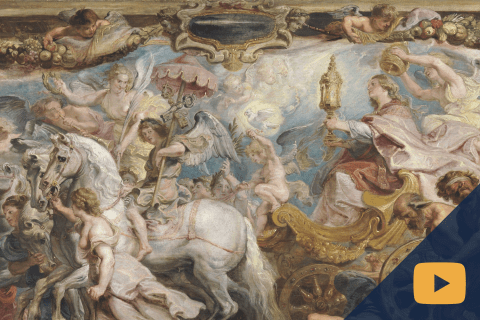
Several magazine covers have made headlines in recent months, displaying celebrities who are posing in ways that degrade the sacredness of Catholicism. In early April, the performer, Rihanna, posed provocatively in a nun’s religious habit on the cover of Interview magazine. The accompanying article offered an interview with the intention of her “confessing all” on a wide range of topics. Yet the cover image of Rhianna wearing heavy make-up and a habit that exposes a part of her chest does not have any relevance to the content of the interview. This magazine cover follows another photo from last year, in which Madonna posed for a European edition of Vanity Fair magazine, dressed like Mary, Our Lady of Sorrows.
These expressions raise a number of questions about celebrities’ intentions regarding their public image and their involvement in organized religion. It seems unlikely that such postures are meant to show respect or reverence for sacred things, even if celebrities are mistaken in their understanding of Catholicism. More likely, these photos are intended to take iconic cultural images that are easily recognizable to widespread audiences and attribute them to the celebrity-status of established performers and artists. Doing so provides a shock to audiences, presenting a false narrative that a celebrity’s exalted status could speak into and even transcend all cultural norms, including those of religion.
It is more concerning if these images are intended to capture a reader’s attention while reducing holy and sacred things to something common and mundane. And at worst, these images might be intended to mock any semblance of the sacred left within our culture. These profane gestures might give celebrities a sense of power and authority, believing that their personal image transcends all cultural boundaries, including those once considered to be holy and exalted. Yet substituting oneself in place of a religious image does not reveal true authority, but just the opposite. For when sacred things are reduced through mockery, the result is that nothing remains dignified that can demand our respect and attention. Mocking the sacred leads to the result that everything must be banal, and therefore, equal.
Yet more importantly for the sake of religion, those who mock sacred things assume grave moral responsibility for their actions. For the sacred objects that are used in worship and in guiding the vocations of believers point to the truth of God, who became incarnate on earth, redeemed us of our sins, and invites us to eternal glory. It is dangerous to mock the things that point to our salvation and eternal happiness, all of which are possible thanks to the love and generosity of our divine Savior. God is all holy. God is pure majesty. And the religious elements that guide us to Him are intended to make us holy, like Him. Those who mock these sacred realities on earth are ultimately mocking God in heaven.
In the face of such mockery, Christians must remember why objects of worship and devotion are so important, as they order us toward the reality of heaven and our union with the Trinity. Expressions of mockery also remind us of the importance to make acts of reparation for those who do not respect God. For rather than sulking in our anger, we pray that God will have mercy on those who disrespect Him, prior to their meeting one day on the Day of Judgement.


